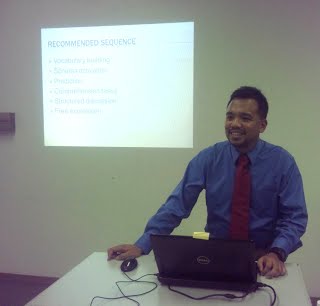Roehl Sybing’s interactive presentation had all attending Hamamatsu JALT members donning their critical thinking caps. After giving a brief rundown of the evolution of critical thinking (CT) across the centuries, Roehl explained why many hold it as one of the more desirable skills of not only speaking a foreign language, but within one’s own language. Inside the EFL field, being able to reflect and engage critically can demonstrate a genuine utilization of language, among other things. However, Roehl holds that the facilitation of CT in EFL must precede discussion of issues, and if there is not enough scaffolding, demotivation can occur because appropriate levels of language needed for comprehensive input and output have not been met. Therefore, he suggests a sequence when integrating CT in the EFL curriculum: 1. Vocabulary building, 2. Schema activation, 3. Prediction, 4. Comprehension tasks, 5. Structured discussion and 6. Free expression. These stages are linked to Bloom’s Taxonomy of learning. CT is the ultimate goal. Roehl led us through a series of exercises which reflected these stages, and resulted in a lively discussion amongst groups about issues raised. The exercises were useful models for further CT adaptation and exploration in our own classrooms.
Reported by Susan Laura Sullivan. |
Meeting Minutes > 2014 Meeting Minutes >


